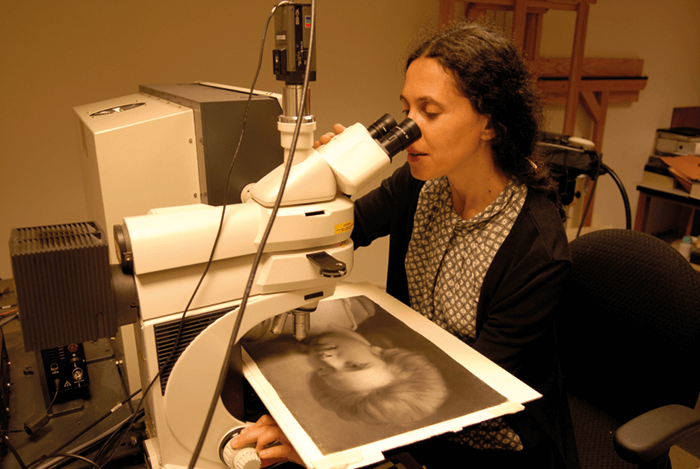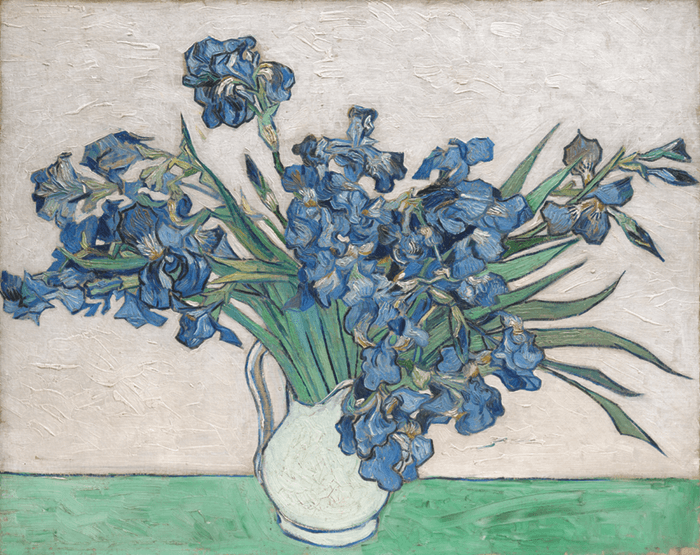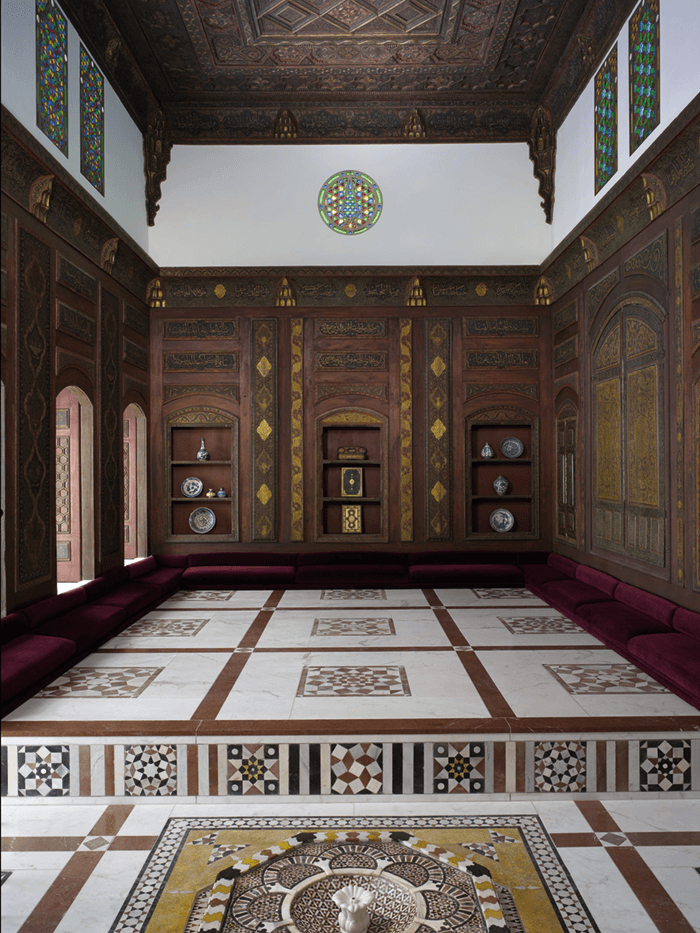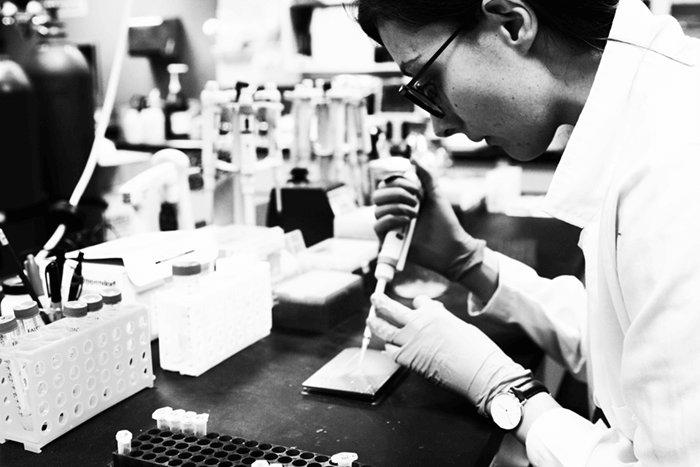How important is it to understand the art that you study?
Elena Basso: A basic knowledge of humanities disciplines, such as art history, archaeology, artistic techniques and conservation theory is usually a requirement for a conservation scientist. My own background is in geology, but I also acquired a good knowledge of art, archaeology and conservation. From the beginning of my career, I understood that communication with archaeologists, art historians, curators and conservators was key, and I have endeavored to find a common language. Julie Arslanoglu: Scientists who enter the field of cultural heritage science may not be required to have a degree in conservation or art, but they need to gain that knowledge, as the preservation of art depends on understanding the materials, the cultural or art historical significance, and the expected appearance of an artwork. Artworks are carefully crafted and considered products of the human legacy, and the materials used, although critical to their preservation, are not the only aspect that our work sheds light on. Our ability to answer questions about provenance, origin, or use is essential to the deeper understanding and contextualizing of artworks. Federico Carò: I agree with Elena and Julie. For our research to be meaningful, it is necessary to have strong collaboration with art historians, curators, and conservators. We, as scientists, need to know how to communicate with other staff at the museum to gather the information we need, as we work on objects from disparate cultures and times. In addition, we need to have a deep knowledge of the traditions, techniques, and materials used to fabricate works of art.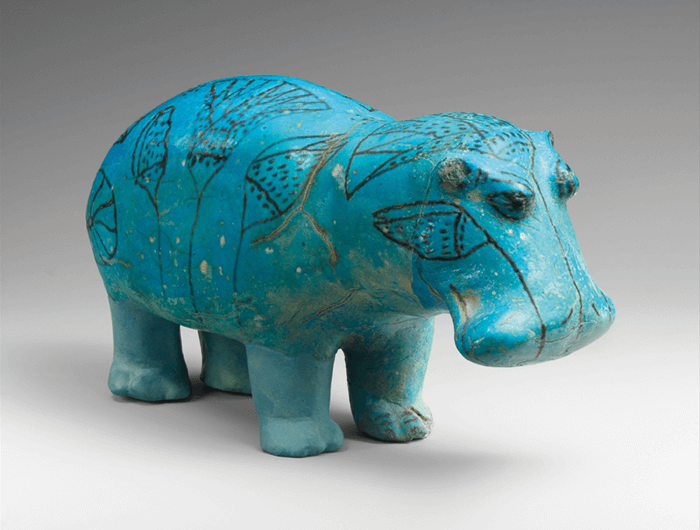
Tell us more about how the team works together...
JA: The scientists of the Department of Scientific Research (DSR) have individual expertise in the identification and study of different materials. Since most artworks are composites of different materials, all of our work is in collaboration, because one technique and one scientist rarely has the solution. EB: Exactly – one single object may raise several questions, such as its material characterization, evaluation of the state of conservation and analysis of previous treatments, or how it should be displayed and stored. FC: Our research group also includes three scientists working specifically on preventive conservation – monitoring the museum’s climate and making sure that all the building and construction materials employed in the museum pose no harm to the works of art. The group is also developing an innovative, reproducible test for approving materials for use in the galleries and this may replace the qualitative test (known as Oddy test) now commonly used in museums.What analytical techniques do you use now, and what new tech would help move things forward?
JA: For the study of organic materials, we currently have: Fourier-transform infrared spectroscopy (two Bruker instruments – one coupled to a microscope and the other a portable instrument), a GC-MS (Agilent) equipped with a pyrolyzer (Frontier Lab), an HPLC system (Waters) and a plate reader for ELISA (SpectraMax). Mass spectrometry has become a crucial analytical tool as its sensitivity allows us to be far more precise in our characterizations, permitting animal and plant speciation as well as degradation evaluation and stability prediction that has not been possible before. Through New York University, we have access to a Bruker matrix-assisted laser desorption ionization time-of-flight mass spectrometry (MALDI-TOF MS) instrument. Ideally, we’d like to acquire a system in-house that we can set to our specifications and also apply MS/MS and high spatial resolution imaging, in order to examine molecular interactions at interfaces of multi-layer structures. LC-MS would also be a powerful tool for our work. It provides complementary information to MALDI-TOF MS and excels at the analysis of smaller molecules, such as dyes.Federico Carò, Research Scientist, Department of Scientific Research With a PhD in Earth Sciences, Federico oversees the investigation of inorganic materials employed in archaeological objects and works of art (pigments, glass, ceramic, metals, rocks, semi-precious and precious stones, etc.). He also investigates inorganic compounds that might manifest as a result of weathering and/or past conservation treatments. He works in direct collaboration with the museum’s curators and conservators on a wide range of research projects relating to exhibitions, specific conservation treatments and broad art-history investigations. Julie Arslanoglu, Research Scientist, Department of Scientific Research Julie joined The Met in 2006 and focuses on the analysis of organic materials used in artworks from the entire collection, primarily paintings and works of art on paper, ranging from ancient Egyptian to modern and contemporary art. She works with curators, conservators, and her scientific colleagues to answer questions about paints made with oils, acrylics, protein and gum binders, varnishes, adhesives, and the changes that occur as these materials interact and age. She also develops and improves analytical approaches with collaborators for the study of these materials, primarily with mass spectrometric and immunology-based techniques. Elena Basso, Research Associate, Department of Scientific Research Elena, who only joined the team in November 2017, works mainly on inorganic materials used in art and archaeology, characterizing ceramics, glass, plasters, stones, metal alloys, pigments, and their degradation products. Together with Associate Research Scientist Federica Pozzi, she is committed to the Network Initiative for Conservation Science (NICS), an ambitious program established by The Met to provide scientific support to those museum partners in New York City who are not equipped for scientific analyses.
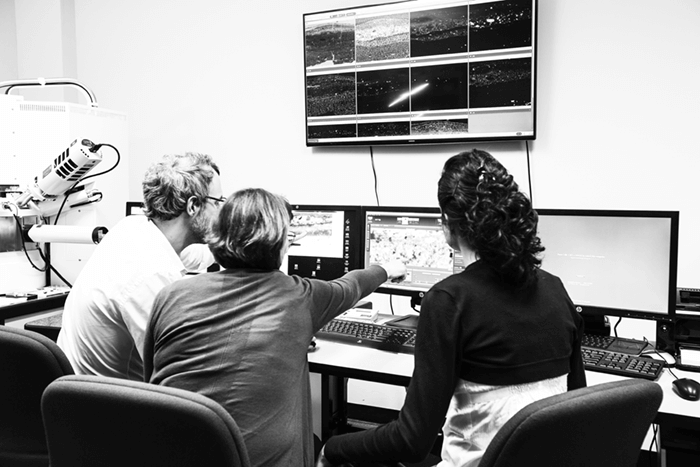
FC: I have access to both invasive and non-invasive techniques that include traditional approaches, such as petrographic microscopy or Bragg-Brentano X-ray diffractometry (XRD), and more innovative techniques such as electron backscattered diffraction (EBSD) within a scanning electron microscope (SEM) or scanning X-ray fluorescence spectroscopy (XRF). State-of-the-art instruments that can be operated non-invasively, such as micro XRD diffraction units with large 2D detectors would benefit my research, as I would be able to characterize crystalline phases in a large variety of archaeological objects and works of art that, because of their uniqueness, cannot be sampled.
What is the most exciting project you’ve worked on recently?
EB: We work on objects from all over the world, dating from prehistory to the present day. One of the most challenging but rewarding projects involved the analysis of an Egyptian stone sculpture from another museum. We determined the cause of intense cracking on the sculpture, and we were also able to indicate the most likely location where the stone was quarried. JA: We have recently identified two unique families of plant-based polysaccharides, one of which contains two species, in a Roman Egyptian painted mummy shroud (2nd–3rd century A.D.). Because of the extremely low amounts of organic materials in the sample, we could never have achieved this with more traditional chromatographic approaches. This discovery opened the conversation among Egyptian experts about materials for image production, as the literature has maintained that ancient Egyptians used only one specific species of Acacia gum. FC: I learn something new and exciting every time I investigate a new work of art. The diversity in technologies, techniques, and materials means almost every investigation is a fresh intellectual and scientific challenge. Right now, my colleagues and I are investigating the provenance of turquoise used in artifacts from ancient Egypt. This research is particularly satisfying because we are validating a fully non-invasive XRF procedure to gather meaningful chemical information from small turquoise artifacts that can’t be sampled for other analyses, such as isotopic or trace element analysis. We can then use the data to help reconstruct trends of procurement, manufacture, and trade of turquoise stone during millennia of Egyptian history.What inspires you?
EB: Ever since I was a child, archaeology and science have been my two passions. At university, I learned about archaeometry, an emerging field of science that applies scientific techniques to the analysis of archaeological materials, combining both of my interests. I was intrigued by how we could start from a small fragment of an object, and unravel how, when and where it was made. JA: What drives me is my wonder at the amazing things that humans have created and cherish, that still exist after a lifetime of travels, commerce, storage, and sometimes anonymity. The challenging, complex questions about materials (which ones were chosen, and why and how, along with why and how they have changed) drives my curiosity – both as a scientist and as an admirer of human expression. FC: I am passionate about my work, and consider myself a very lucky scientist! I am particularly inspired by the strong, but sometimes invisible, connection that exists between technical and material choices and the artistic effect/product of artists and artisans. I enjoy discovering through scientific investigation that specific artistic results were achieved because of an intimate knowledge and skilled use of the available materials. This is valid for modern artists as well as for ancient civilizations.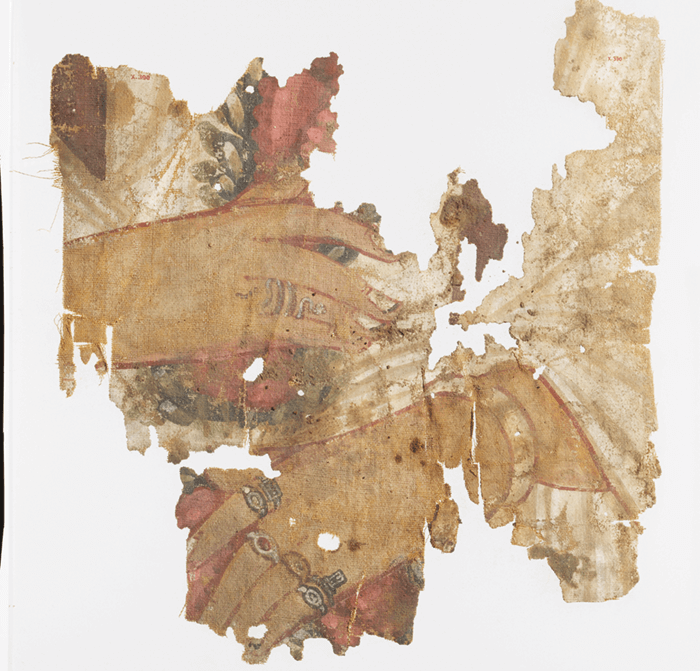
How has the field of conservation advanced in the last couple of decades?
FC: Conservation, as well as scholarly research in the field of the arts, increasingly relies on scientific research. For instance, we are seeing a constant increase in the proportion of art history and conservation fellowships that require some kind of scientific investigation as part of their research. EB: My perception is that conservation professionals have become more aware of the importance of scientific support for conservation treatments, which has resulted in larger investment in conservation science. This in turn allows scientific departments in museums to acquire state-of-the-art equipment and carry out cutting-edge research. Scientists and conservators working together definitely contributes to advancement in both fields. JA: The field of art conservation has become much more sophisticated in its understanding and incorporation of the science behind observed phenomena. Scientific research has begun not only to provide material identification but also propose mechanisms and conditions for the changes that are observed in artists’ materials. These scientific advances have helped provide more non-invasive techniques for the evaluation of artworks as well as guiding cleaning and structural conservation, for example, treating water-sensitive modern oil paintings, and in the species characterization of biological-originated materials.What are the hot topics in heritage science?
FC: Conservation science relies increasingly on non-invasive techniques. The visual, synoptic presentation of large amounts of multi-layered data has the potential to increase the number of works of art and archaeological objects that can be investigated (to include those that can’t be sampled, for instance) – and it allows a larger community of scholars (conservators, curators, and art historians) to access and properly interpret the results from scientific analysis. In addition, the improvement in the sensitivity of certain analytical instruments (for instance the development of laser ablation SERS) allows us to obtain information from very small amounts of material, something not possible a few years ago. Conservation scientists are continuously working with colleagues and peers from other research fields to adapt innovative analytical techniques to the study of artworks. JA: At a minimum, non-invasive imaging techniques, such as scanning macro-XRF and multi- or hyperspectral imaging, provide a visual map for understanding similarities and differences of the surface of an object; at best, they can provide molecular information about the composition. The ability to create a “picture” of elemental distributions or organic components (such as the binder for a paint) is powerful; art historians, curators and conservators can use the information to guide interpretation and conservation treatment.Does the public understand the value of conservation?
FC: I believe the value of conservation and science is generally underestimated. We need to make research in this field more visible, and to include the results from investigations by scientists and conservators in exhibitions and in the permanent galleries. There is an idea that the public find science boring, but in reality people enjoy discovering scientific facts about works of art, and are inspired when looking at objects from a different perspective. Combining art and science can also help young visitors to discover and relate to STEAM (science, technology, engineering, arts and math) topics. EB: People go to a museum to enjoy art, but also to learn. I think the majority of people are conscious of the importance of conservation, but relatively unaware of the contribution of science to this area. When I talk to people about my job, their first question is always: “Oh, so you deal with authentication?” JA: Informed collectors are very knowledgeable about the value of conservation – and some are quite aware of the contribution of science to the conservation of their collections. When it comes to the general public, our analyses provide another way to access and appreciate art, helping visitors to understand how an artwork was created and how its meaning and value has changed over time.What are the unique challenges of this field?
EB: I came to the museum from academia. At the university, I worked on medium- and long-term projects, dealing with large samples (up to 3–4 cm) – which allowed me to perform every kind of analysis I could think of and collect huge amounts of data. When you work in museum conservation science, the methodology remains more or less the same, but the approach is different. Data need to be collected and delivered in a short time, because results can impact on the choice of a conservation treatment. The sample size drops down to a few mm (if you are very lucky!), or even a single fiber or scraping from a surface. JA: Working with extremely small, very materially complex samples, we often only have one chance to obtain an answer. Sampling artworks is not something that is done without careful consideration with conservators and curators but it is necessary when we can’t answer the question with a non-destructive technique. Furthermore, the materials in artworks age over time, and the molecules interact with the atmosphere, light, and many different inorganic and organic materials. It is critical that our analytical methods are robust, reliable, and reproducible. FC: As Elena and Julie said, the main analytical challenges relate to the very small samples – if any – we have to work with. Thus, highly sensitive, non-invasive analytical instruments would be ideal in our field.A long-term collaboration between The Met and Bruker Corporation puts new tech to the test The Met and Bruker have embarked on a ten-year collaboration to improve upon the instrumentation used for heritage science analysis. The Met’s ambition is two-fold: to set up a mobile lab for the Network Initiative for Conservation Science (NICS), a new program established by The Met to support research at other museums in New York City, as well as to incorporate high performance mass spectrometric and X-ray diffraction equipment into the scientific department. So how does the partnership work on a day-to-day basis? “We identify the challenges that we encounter– such as very limited sample, contaminated and degraded materials, and the need for a non-invasive approach – and work with Bruker to advance analytical technologies and methods,” says Research Scientist Julie Arslanoglu. For example, NICS scientists were given the opportunity to test a prototype of the Bravo handheld Raman spectrometer for the non-invasive analysis of artworks, and the equipment was modified based on the team’s critical review, before being launched to the market. Met scientists have also evaluated highly sensitive instrumentation such as UltrafleX MALDI-TOF-TOF with imaging for the analysis of microsamples from artworks. “A collaboration of this nature has the potential to advance the field of heritage science,” says Research Scientist Federico Carò. “The recent introduction of XRF scanners, such as the Bruker M6, has already radically changed the way we approach the study of art objects with relatively flat surfaces,” he says. “In a few hours, it is now possible to collect high-resolution data from an artwork without the need for sampling – allowing us to map the distribution of materials at and below the object’s surface, identify compositional changes and later additions or retouches, and plan a representative and minimally invasive sampling campaign, if necessary.”
